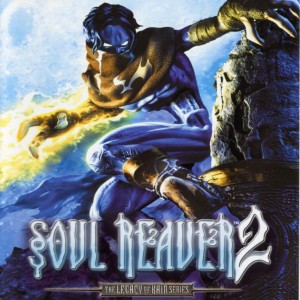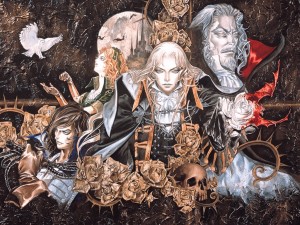My mainstream Nintendo game franchise is Castlevania. Some people love The Legend of Zelda, others Metroid, but I’m a Castlevania fan. Which is not to say that I have played a lot of Castlevania: only half of Symphony of the Night and Curse of Darkness, although I have watched a friend play through most of Simon’s Quest.
One reason for my enthusiasm has to do with Castlevania’s haunting music and its classical influences, especially in the tracks “Vampire Killer” and “Bloody Tears,” which are touchstones of my musical tastes. (When I played in a rock band, I often gave “it sounds like Castlevania” as a reason for covering songs by a variety of bands, from Opeth to Iron Maiden. Yngwie Malmsteen’s neoclassical metal, characterized by its use of the melodic minor scale and techniques like pedal point, also strongly resembles Castlevania stylistically). This essay by a musicologist offers excellent, comprehensive analysis of Castlevania music.
Another reason for my love of Castlevania has to do with level design and the spaces of the Belmonts’ quests, which were based in part on actual castles.
The third and most important reason for my love of Castlevania is that it is a classic example of Gothic gaming. Laurie N. Taylor is the authority on survival horror games and their relationship to the Gothic, which was her dissertation topic. My understanding of the Gothic is much less rigorous and detailed than Laurie’s, but my definition does involve a set of criteria.
By a Gothic game, I mean one that is
• Darkly romantic
• Horror influenced
• Sometimes haunted by demonic overtones and/or undertones
• Inclusive of vampires, werewolves, angels, demons, and black magic
• Often set in a castle, dungeon, dark forest
• Brooded over by an atmosphere of mystery and the arcane which lends itself to symbolism.
Of Gothic games, I am currently most interested in the Legacy of Kain series, of which I have played all of Blood Omen: The Legacy of Kain as well as parts of Soul Reaver 2 and Defiance. In terms of the relationship between gaming and literature, I am drawn to the Legacy of Kain series and its Miltonic overtones, as alluded to in the epigraph to Andrew Plotkin (a.k.a. Zarf’s) chronology of this time-bending franchise. Plotkin heads his diagram with the quotation:
“We attempt to trace the history of Raziel, who was cast down, and that ancient device which is lately called the Soul Reaver.”
Plotkin’s eighteenth-century prose style is consciously Miltonic, especially in the phrase “who was cast down.” The parallel is between Raziel and Milton’s Lucifer: both rebels against a divine being whose motives and actions are sinister and suspect, perhaps conferring upon the fallen angels the status of romantic hero or anti-hero.

I’ll have more to say about the Gothic in gaming and its relationship to design as these blog entries continue.

“Realms of the Haunting” stands out in my mind for being a fairly creepy gothic action/adventure for the PC. I believe it was from the DOOM era, which means it is probably unplayable these days (both technically and aesthetically), but i remember staying up nights working through its interdimensional, Lovecraftian mystery. I especially liked it because there was a pretty good chance that the whole thing was a paranoid hallucination – shades of Eternal Darkness. It also felt like a spiritual predecessor to Undying, with its macabre themes and FPS-style action.
I don’t know if it was just your post, nostalgia, or the fever dreams I have been havig of late, but something prompted me to actually track down and order a copy of Realms of the Haunting on eBay. Now I will force you to play it.